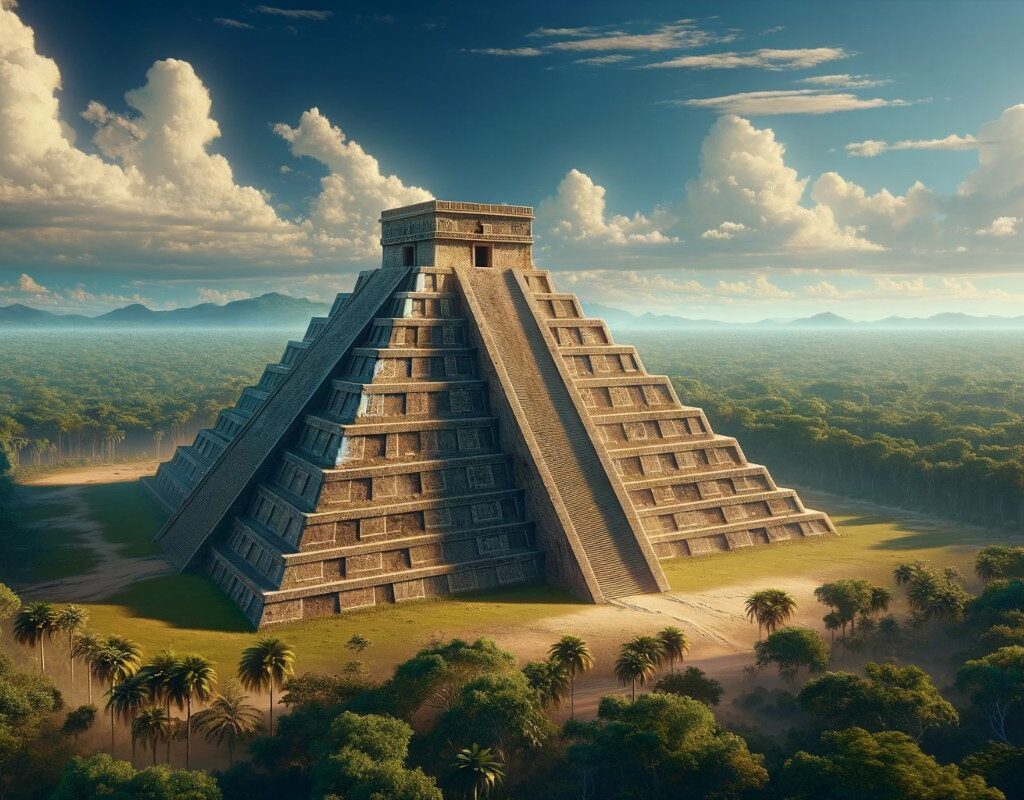The arrival of the year 2012 unleashed a wave of speculation about ancient Mayan prophecies. However, beyond the apocalyptic myths lies a story rich in culture, scientific knowledge, and a concept of time that continues to challenge our modern understanding.
Mayan Civilization: A Culture Ahead of Its Time
Beyond Prophecies: The Maya’s Cultural and Scientific Legacy
Often associated with mysteries and prophecies, the Maya civilization is, in fact, a testament to remarkable human achievements. Spanning from 2000 BC to 1500 AD, the Mayas not only built majestic cities and temples; they also made significant strides in various fields.
In astronomy, the Mayas observed the skies with such precision that their calendars rival modern ones. They did more than just count days; they understood and predicted celestial events with astonishing accuracy. This astronomical knowledge, intrinsically linked to their belief system and rituals, was vital for their society.
In mathematics, the Mayas introduced revolutionary concepts, including the use of zero, a notion that transformed the mathematical world. Their vigesimal numbering system enabled complex and precise calculations, essential for agricultural planning and monumental architecture.
Furthermore, their writing system, comprised of glyphs representing sounds and words, was a sophisticated form of communication and record-keeping. Through this, they documented their history, beliefs, and scientific knowledge, leaving a lasting legacy in the form of codices and inscribed monuments.
These intellectual feats stand as a testament to Mayan ingenuity and offer a more enriching perspective than the apocalyptic interpretations of 2012. Understanding these achievements reveals a civilization that was not only ahead of its time in various respects but also left an indelible mark on human history.
2012 in Historical and Cultural Context
2012: Between Myth and Reality
The year 2012 captured the global imagination, but what truly unfolds is a more complex and fascinating narrative. The Mayan prophecies about this year, often misinterpreted, symbolized the end of one cycle and the beginning of another in their Long Count calendar.
Far from predicting an apocalypse, these cycles reflected a view of time as cyclical and renewing.
In popular culture, however, 2012 was presented as a pivotal moment, generating a mix of anxiety and anticipation. Documentaries, books, and movies fueled theories ranging from catastrophic earthly changes to global spiritual awakenings.
These interpretations, while compelling, shifted focus away from the true essence of Mayan beliefs.
Scientists and Mayan studies experts clarified that the apocalyptic predictions were modern misunderstandings. They stressed the importance of understanding Mayan prophecies within their own cultural and spiritual context, rather than extrapolating them to contemporary fears.
Interest in 2012 also fostered greater recognition and respect for the Mayan civilization. It sparked curiosity about their history, art, and scientific knowledge, beyond sensationalist narratives. This year became a catalyst for reexamining and appreciating one of humanity’s most fascinating cultures.
Thus, the 2012 phenomenon, far from being an apocalyptic end, emerged as an invitation to explore and value a rich and enduring cultural and scientific legacy. Ultimately, it provided an opportunity for a deeper and more nuanced understanding of a civilization that continues to inspire awe and admiration.
Post-2012 Reflections: Perspectives and Legacies
The passing of 2012 left behind not just theories and speculations but also marked a new approach toward the Mayan civilization. This historical moment, laden with expectations and fears, ultimately enriched the understanding and appreciation of an ancient culture.
The fascination with 2012 served to open a window into the past, allowing for a more comprehensive appreciation of the Mayas, beyond the apocalyptic narratives. The true legacy of the Mayas, marked by their complexity and depth, lies in their contributions to astronomy, mathematics, and art.
Their knowledge, far from being mere tools for predicting the end of the world, are example of an advanced civilization and its view of the universe. This legacy continues to inspire and challenge our understanding of human history.
Ultimately, the 2012 phenomenon reminds us of the importance of looking beyond simplistic interpretations. It invites us to recognize the richness of ancient cultures and understand their impact on the modern world.
Thus, the story of the Mayas and the year 2012 become a powerful reminder that the past always has something new to teach us, offering valuable lessons for the present and future.





